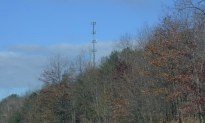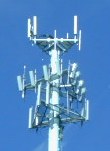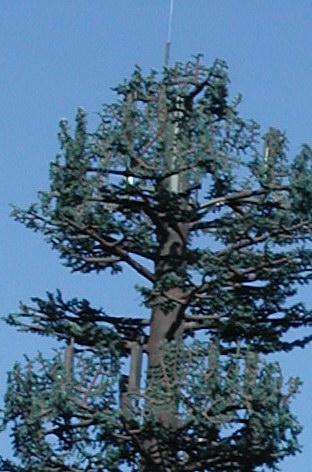danbricklin.com/log
|
|
Cell Towers
|
|
I'm a user of cellular telephones. I've become more and more dependent upon them over the years, especially since I switched to an AT&T One-Rate phone. I have a Nokia 6160 unit with long battery life and a flat monthly fee that makes it feel like all calls are free (they're not, but it does feel that way after you pay $90/month to cover the "important" calls).
Cell phones, especially the digital PCS ones, only work where there is a good signal. Good signals usually mean transmitters nearby, which mean antenna towers nearby. Cities that don't allow towers (like some near me, including the expensive Boston suburb of Lincoln) often get poor reception. It's like cities that don't allow paved roads: It's hard to get around.
You can get obsessed with having good reception, especially if you need to be in contact (such as when a loved one is in the hospital, you are awaiting a business call, or you've left kids home with less than perfect supervision). You rate places by how many "bars" they are (the measure on the cell phone display of signal strength). One bar: Bad! Four bars: Good! Here's how the phone looks in my office with three bars (Good enough!):
 Three bars
In that vein, I've gotten to notice cell towers when I travel. Their proliferation is a sign of our society adopting this means of communication. It is a very visible indication of technology's acceptance, much as roads and highways signaled the integration of personal internal combustion-powered transportation into society in the past. A cell tower nearby (assuming it is used by your cellular company) means you're in touch and connected.
Here's a common tower on the Massachusetts Turnpike:
 Cell tower in the wild
Here's a close up of another tower, showing the individual antennas:
 Tower close up
Many people consider these towers ugly and an intrusion on their neighborhoods. This is an area of heated battles for neighborhood rights. This is even though they depend upon cellular communications in other neighborhoods and would be in a litigious mood if their cell phone got "zero bars" when their car broke down on a deserted road or unfamiliar area. (Cellular companies talk about bomb threats from irate customers with poor reception.) People allow other intrusions from modern technology (roads, power lines, telephone poles, lamp posts, water towers, etc.). The low power emitted by the new digital PCS transmitters, and many studies, makes the health concerns minimal with regards to the towers. It's how they look. (I hear from readers, though, about other issues, such as the effects on birds -- especially towers steadied by wires. Health and birds are covered, I'm told by a reader, in a book: "Cell Towers: Wireless Convenience? or Environmental Hazard?" I have not read it.)
In order to "hide" cell towers, some operators have put them inside structures, like church steeples (paying subsidies to the owners that can be significant). Others have tried the "tree approach": Make the cell tower look like a tree. Here are photographs of two such towers I've come across in my travels:
Garden State Parkway: This tower is on the east side of New Jersey's Garden State Parkway, right at mile 135:
 Cell "tree" on the Garden State Parkway
Here's a close up:
 Antennas revealed
Pennsylvania Turnpike: This tower is on the south side of the Pennsylvania Turnpike, two miles east of the Rt. 611/Willow Grove exit near Philadelphia:
 Another cell "tree"
I first posted this essay December 15, 1999. Since then I have received various tidbits about this topic from other people and created a More Cell Towers page. When I add more material I'll indicate it on my main log page.
Continue with More Cell Towers...
|
|
|
© Copyright 1999-2018 by Daniel Bricklin
All Rights Reserved.
|